Donnerstag, 9. Juni 2011
Donnerstag, 9. Juni 2011
Day 97: The End...

It is 23:54 pm and I am sitting on my bed, staring at the wall of my room. The outside temperature is still 27°C, making me feel completely exhausted. Not wanting to move, to think, to breethe, just wanting to sit, happy about every tiny breeze coming through the wide opened window every once in a while.
Tomorrow at this time I will be in Berlin, back to the place where everything began three months ago...
What am I supposed to write in this last blog entry? I could try to explain this present mood to you - an ambigous, strange feeling...sad to have to say goodbye again, not knowing when I will be back. Satisfied to have successfully managed this journey, three months, four countries, dozens of people. I have to think of the lady from Dagestan selling her bread to me, names like Abudu, Zamira, Shamil, Alisher and Jangar, people who made those formerly surreal places appear very personal all in a sudden. I feel somehow depressed that the adventure is over, an adventure which I was looking forward to for such a long time. I feel happy about everything I learned...I saw...I experienced. Glad that I will be again just one person among others, no "alien" anymore. Somehow I am scared about the loads of work waiting for me now...
...thinking...
I have to think of this game I played together with some friends a couple of days ago. Five turtles, five colours. The goal is to reach the other side of the board. Once you reach the last field, you can just start again from the beginning...somehow comforting to know...

See you again soon!
Freitag, 27. Mai 2011
Freitag, 27. Mai 2011
Day 79-83: China - Luoyang and Xi'an
Here are some of my favourite exhibits which I saw during the last days:
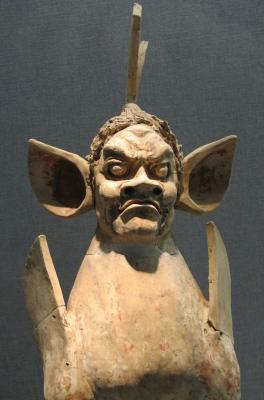
Tomb guardian - nothing ever escaped him...
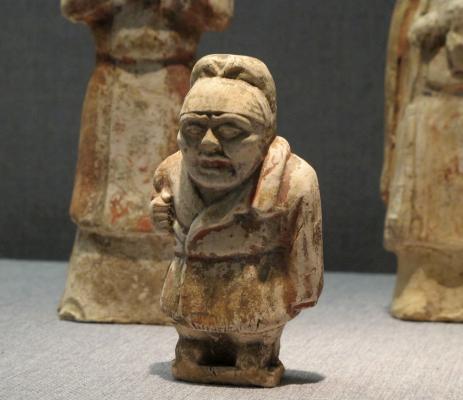
...well, I am not sure about him?
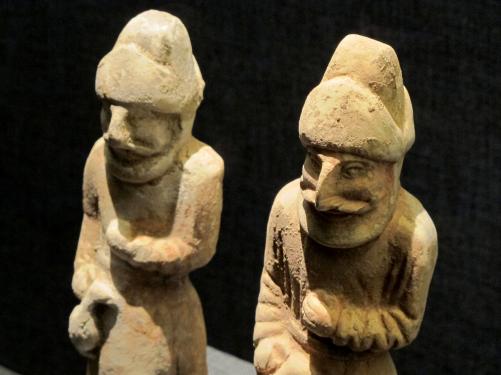
Nothing has changed - the typical depiction of a foreigner: High nose, deep-set eyes and way too much beard...
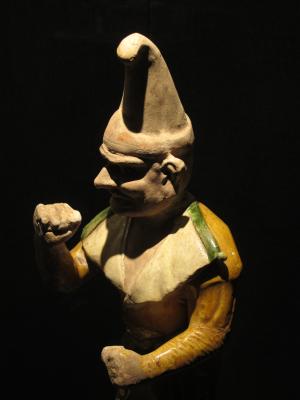
...not to talk about the strange looking fashion!
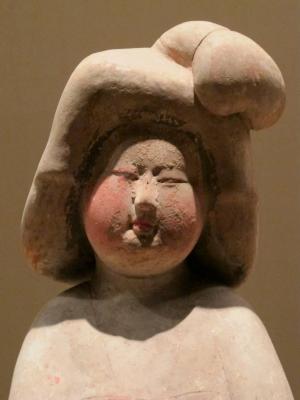
White skin, a little bit chubby and towering hair - the embodiment of beauty during the Tang dynasty.
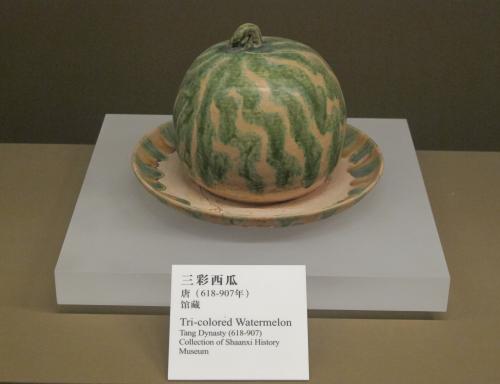
Concerned about your afterlife? Well, this fellow will not suffer from hunger after having eaten this watermelon.
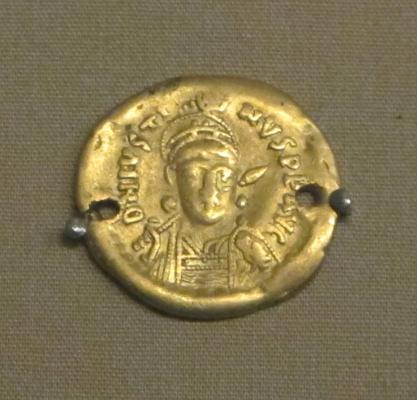
A golden coin from the East Roman Empire found inside a Chinese tomb. The coin initially came to China via the ancient Silk Road. It was later used in a funerary context as a payment or bribe for the ferryman who conveyed souls across the river Stix that divided the world of the living from the world of the dead. Roman coin, Chinese tomb, ancient Greek and Roman funerary custom, put into the mouth of a Chinese...wow, that's globalization!
Everyone who visits the city of Luoyang has to make a trip to the Temple of the White Horse. According to legend, this temple is the first Buddhist temple in China, established in 68 AD under the patronage of Emperor Ming in the Eastern Han capital Luoyang.
After the emperor had dreamed about the establishment of Buddhism in India, two of his emissaries were sent for the search of Buddhist scriptures. On their way they encountered two Indian Buddhist monks. The emissaries managed to persuade them to join them and return to China. They carried Buddhist scriptures, relics and statues of Buddha, riding on two white horses. After their arrival in China, the emperor built a temple in their honour and named it the Temple of the White Horse as an appreciation of the two white horses that had carried them all the way to China.
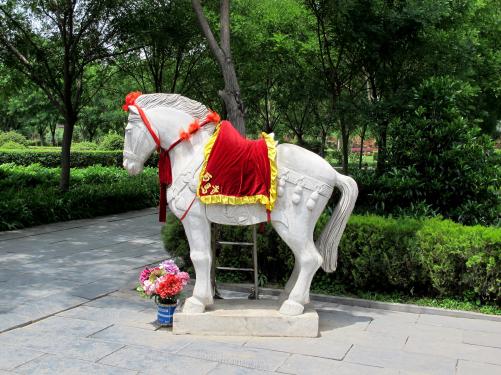
Where there is a temple named after two white horses, the horses cannot be far away.
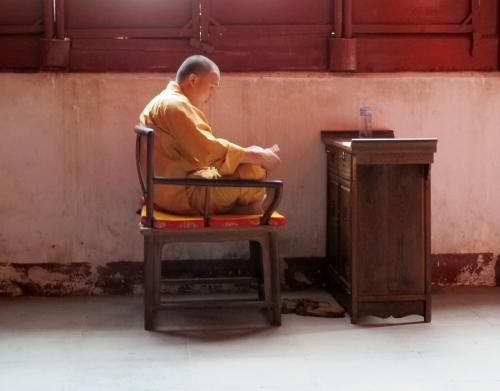
A Buddhist monk studying the Buddhist scriptures.
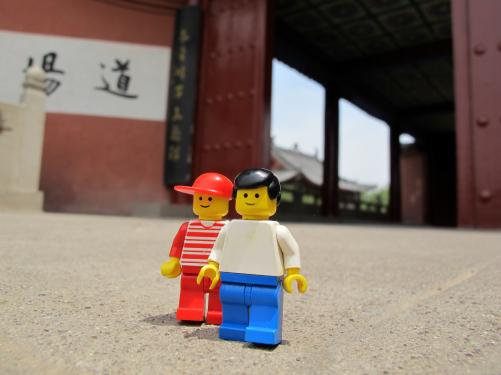
On the way through the premises of the temple...
...there was this strange atmosphere in the air...
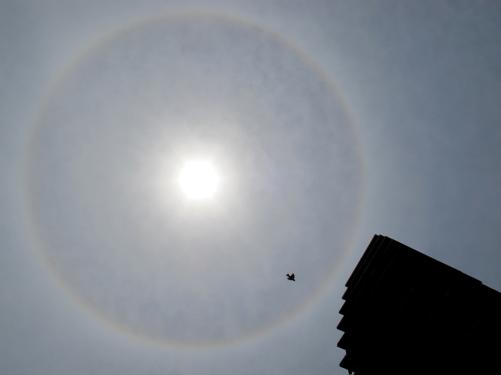
...something was different today. For some people this was just a natural phenomenon, for others it was the holy light of Buddha ;)
One of the most famous sights in China - the Buddhist Longmen Grottoes in Luoyang. Carved into the limestone cliffs of the Xiangshan and Longmen Mountains are as many as 100.000 Buddhist statues within 1.400 caves, ranging in size from 25 mm to 17 m. Furthermore, the area contains nearly 2.500 stelae and inscriptions as well as over sixty Buddhist pagodas.
The work on the grottoes began during the Northern Wei Dynasty in 493 AD. Patrons and donors included emperors and members of the royal family, aristocrats, officials and religious groups. The most famous patron was Wu Zetian, the only female empress of China who reigned during Tang dynasty.
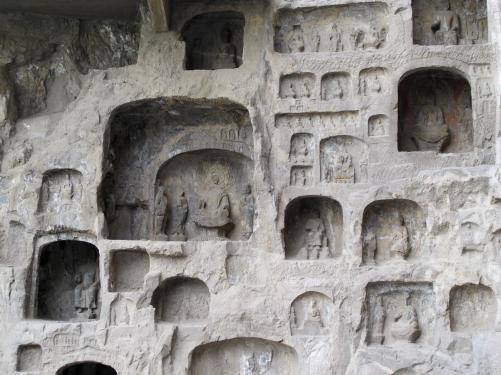
The cliffs of the Xiangshan and Longmen Mountains...over and over dotted with caves housing thousands of Buddhist sculptures.
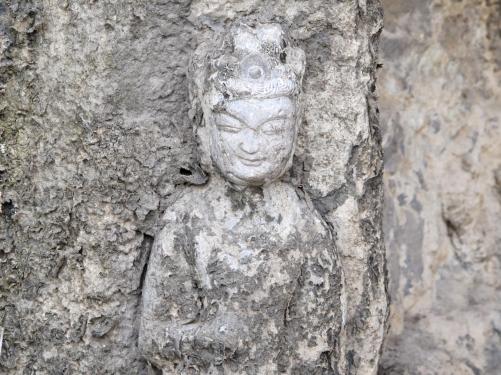
Some of the sculptures are obvious, others are only found on a closer view.
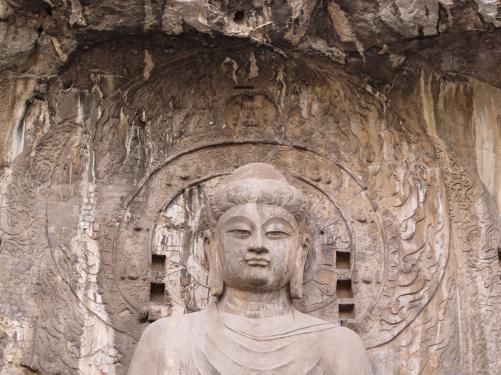
Of the nine huge carved statues, the highly impressive image of Vairocana Buddha is sculpted on the back wall of the Fengxian Cave. The sculpture measures over 17 m. Only the ears reach a lenght of 2 m, promising a loooong life. An inscription at the base dates the Buddha to the year 676.
It is said that empress Wu Zetian donated "twenty-thousand strings of her rouge and powder money" to complete this cave. The sculpture was modelled after the empress herself. Among other names, it was later termed the "Chinese Mona Lisa".
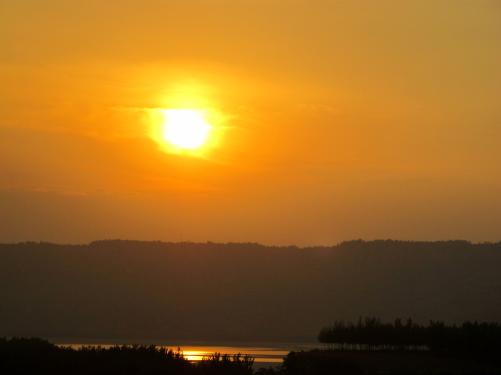
After a long day of visits...the train makes its way through the dusk, bringing me to the final destination of my journey...Xi'an.
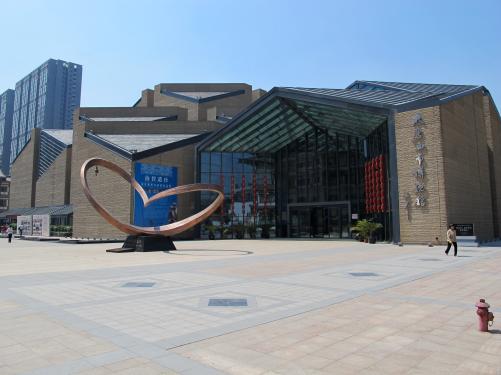
Built on the former site of the Western Market of the ancient capital Chang'an, present-day Xi'an - the Western Market Museum of Xi'an. It was on this square where merchants from all directions met, exchanged their goods and ideas.

Tomb guardian - nothing ever escaped him...

...well, I am not sure about him?

Nothing has changed - the typical depiction of a foreigner: High nose, deep-set eyes and way too much beard...

...not to talk about the strange looking fashion!

White skin, a little bit chubby and towering hair - the embodiment of beauty during the Tang dynasty.

Concerned about your afterlife? Well, this fellow will not suffer from hunger after having eaten this watermelon.

A golden coin from the East Roman Empire found inside a Chinese tomb. The coin initially came to China via the ancient Silk Road. It was later used in a funerary context as a payment or bribe for the ferryman who conveyed souls across the river Stix that divided the world of the living from the world of the dead. Roman coin, Chinese tomb, ancient Greek and Roman funerary custom, put into the mouth of a Chinese...wow, that's globalization!
Everyone who visits the city of Luoyang has to make a trip to the Temple of the White Horse. According to legend, this temple is the first Buddhist temple in China, established in 68 AD under the patronage of Emperor Ming in the Eastern Han capital Luoyang.
After the emperor had dreamed about the establishment of Buddhism in India, two of his emissaries were sent for the search of Buddhist scriptures. On their way they encountered two Indian Buddhist monks. The emissaries managed to persuade them to join them and return to China. They carried Buddhist scriptures, relics and statues of Buddha, riding on two white horses. After their arrival in China, the emperor built a temple in their honour and named it the Temple of the White Horse as an appreciation of the two white horses that had carried them all the way to China.

Where there is a temple named after two white horses, the horses cannot be far away.

A Buddhist monk studying the Buddhist scriptures.

On the way through the premises of the temple...
...there was this strange atmosphere in the air...

...something was different today. For some people this was just a natural phenomenon, for others it was the holy light of Buddha ;)
One of the most famous sights in China - the Buddhist Longmen Grottoes in Luoyang. Carved into the limestone cliffs of the Xiangshan and Longmen Mountains are as many as 100.000 Buddhist statues within 1.400 caves, ranging in size from 25 mm to 17 m. Furthermore, the area contains nearly 2.500 stelae and inscriptions as well as over sixty Buddhist pagodas.
The work on the grottoes began during the Northern Wei Dynasty in 493 AD. Patrons and donors included emperors and members of the royal family, aristocrats, officials and religious groups. The most famous patron was Wu Zetian, the only female empress of China who reigned during Tang dynasty.

The cliffs of the Xiangshan and Longmen Mountains...over and over dotted with caves housing thousands of Buddhist sculptures.

Some of the sculptures are obvious, others are only found on a closer view.

Of the nine huge carved statues, the highly impressive image of Vairocana Buddha is sculpted on the back wall of the Fengxian Cave. The sculpture measures over 17 m. Only the ears reach a lenght of 2 m, promising a loooong life. An inscription at the base dates the Buddha to the year 676.
It is said that empress Wu Zetian donated "twenty-thousand strings of her rouge and powder money" to complete this cave. The sculpture was modelled after the empress herself. Among other names, it was later termed the "Chinese Mona Lisa".

After a long day of visits...the train makes its way through the dusk, bringing me to the final destination of my journey...Xi'an.

Built on the former site of the Western Market of the ancient capital Chang'an, present-day Xi'an - the Western Market Museum of Xi'an. It was on this square where merchants from all directions met, exchanged their goods and ideas.
Link
(0 Kommentare)
Kommentieren
Donnerstag, 19. Mai 2011
Donnerstag, 19. Mai 2011
Day 75-77: China: Qingzhou - 7376.71 km later
77 days later, 7376.71 km away from Saint Petersburg, a four hours train ride from Beijing...QINGZHOU! Yes, I arrived at the easternmost point of my journey where yet another museum was waiting for me.
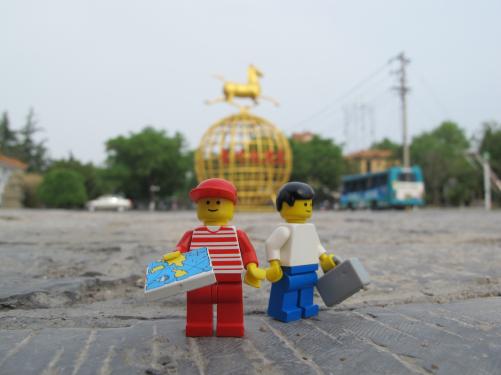
"Welcome in Qingzhou!"
For most of the people the ancient city of Chang'an, modern Xi'an, was the terminus of the ancient Silk Road. However, archaeological finds prove that this is not true. The trading routes went much further to the east, all the way to the coast of eastern China, even to Japan and Korea. The city of Qingzhou was one of those eastern trading centers where people from the Western Regions and Central Asia settled and integrated into the Chinese society.
Not only goods travelled along the ancient Silk Routes, but also ideas and religions. One of the most important archaeological finds was made on the premises of Qingzhou's Longxing temple in 1996. About 400 Buddhist sculptures, mostly dating from the 6th century, were accidentaly found during construction works. They were burried in an act of Buddhist piety in the first half of the 12th century, as a consequence to the persecutions initiated by teh Song dynasty emperor Huizong, a devoted Daoist.
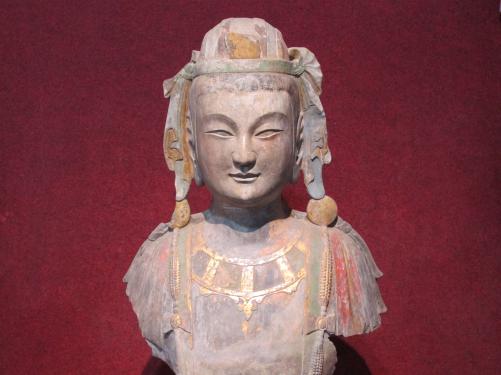
"Venus of the East"
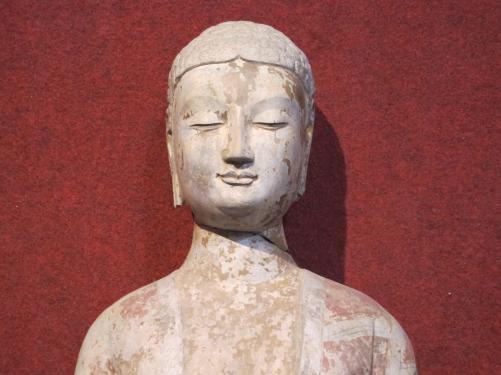
Sculpted or alive?
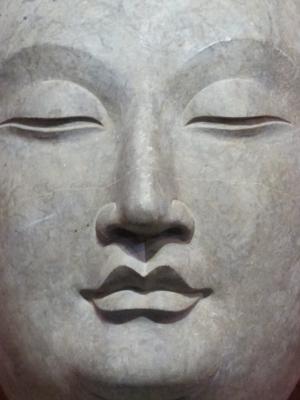
Buddhist sculpture from Qingzhou
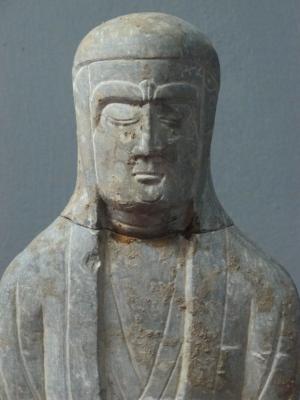
Buddhist arhat or western knight?
Traces of Buddhism can not only be found inside the Qingzhou museum...
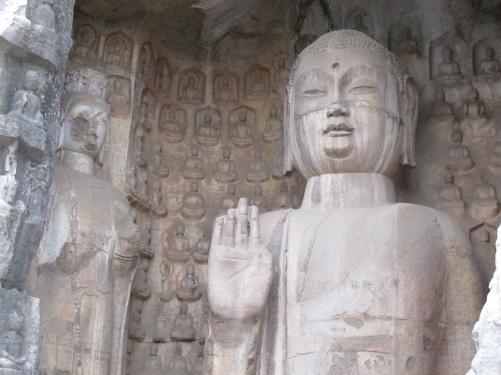
Tuo Shan (Camel-Mountain) featuring a collection of Buddhist grottoes
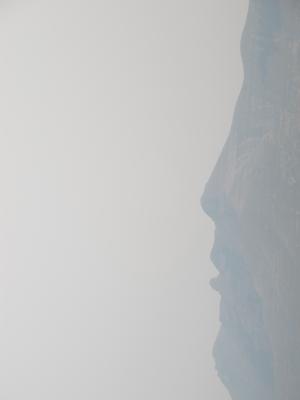
Mountains of Qingzhou or Buddha's face?
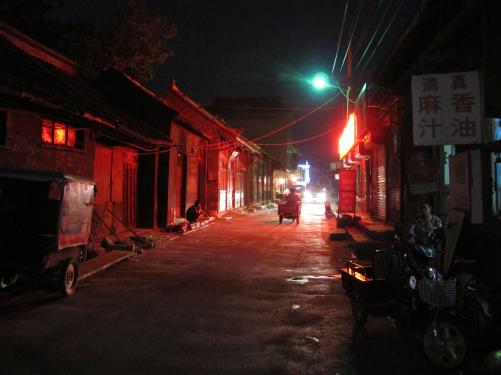
The end of a long day in Qingzhou

"Welcome in Qingzhou!"
For most of the people the ancient city of Chang'an, modern Xi'an, was the terminus of the ancient Silk Road. However, archaeological finds prove that this is not true. The trading routes went much further to the east, all the way to the coast of eastern China, even to Japan and Korea. The city of Qingzhou was one of those eastern trading centers where people from the Western Regions and Central Asia settled and integrated into the Chinese society.
Not only goods travelled along the ancient Silk Routes, but also ideas and religions. One of the most important archaeological finds was made on the premises of Qingzhou's Longxing temple in 1996. About 400 Buddhist sculptures, mostly dating from the 6th century, were accidentaly found during construction works. They were burried in an act of Buddhist piety in the first half of the 12th century, as a consequence to the persecutions initiated by teh Song dynasty emperor Huizong, a devoted Daoist.

"Venus of the East"

Sculpted or alive?

Buddhist sculpture from Qingzhou

Buddhist arhat or western knight?
Traces of Buddhism can not only be found inside the Qingzhou museum...

Tuo Shan (Camel-Mountain) featuring a collection of Buddhist grottoes

Mountains of Qingzhou or Buddha's face?

The end of a long day in Qingzhou
... ältere Einträge
